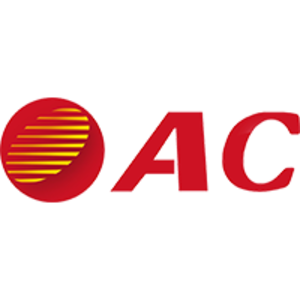LANGUAGE↓

News & Policies

Guide for the Preferential Tax Policies
China Government has recently issued the Guide for all 89 preferential tax policies till June 2019. AC concludes that is related to the foreign invested companies in China as follows.
一
1. From January 1, 2019 to December 31, 2021, a small-scale taxpayer that carries out sales acts subject to value-added tax (VAT) with total monthly sales amounting to CNY100,000 or below (or quarterly sales amounting to CNY300,000 or below if one quarter is a tax period, hereinafter the same) shall be exempted from VAT.
2. From January 1, 2019 to December 31, 2021, for small low-profit enterprises, the portion of less than CNY1 million, and the portion of more than CNY1 million but less than CNY3 million, of the annual taxable income, will be included in the actual taxable income at 25% and 50% respectively, based on which the enterprise income tax payable will be calculated at the reduced tax rate of 20%.
二
1. From January 1, 2019 to December 31, 2021, People’s governments of provinces, autonomous regions, and municipalities directly under the Central Government may, in light of the actual local conditions and the needs of macro-control, determine that the resource tax, urban maintenance and construction tax, property tax, urban land use tax, stamp tax (excluding stock trading stamp tax), cultivated land occupation tax, education surcharge and local education surcharge imposed on small-scale VAT payers may be reduced within a tax rate range of 50%. Small-scale VAT payers who have enjoyed the resource tax, urban maintenance and construction tax, property tax, urban land use tax, stamp tax, cultivated land occupation tax, education surcharge, local education surcharge and other preferential policies may still enjoy the preferential policies stipulated in this Article.
三
1. From January 1, 2018, there a venture capital enterprise that makes an equity investment of two years (24 months) or more in duration in an unlisted small or medium-sized high-tech enterprise satisfies the following requirements, in the year in which the two–year period expires, it may make a deduction of 70% of the amount invested in the small or medium-sized enterprise from its taxable income for the year; if its taxable income exceeds 70% of the amount of the investment, the deduction may be carried forward to the following tax year(s).
2. Where a limited partnership venture capital enterprise makes equity investment in a non-listed small or medium-sized high-tech enterprise for not less than two years (24 months, hereinafter the same), its corporate partner may make a deduction of 70% of the amount invested in the non-listed small or medium-sized enterprise from its taxable income distributed from the venture capital enterprise for the current year; if its taxable income for the current year is less than 70% of the investment amount, the deduction may be carried forward to the following tax year(s). The term "not less than two years" mentioned above means that as of October 1, 2015, a limited partnership venture capital enterprise has actually paid in the investment in non-listed small and medium-sized high-tech enterprises for at least two years, and meanwhile, its corporate partners has also actually paid in the contributions to the limited partnership venture capital enterprises for at least two years. The investment amount of a corporate partner of a limited partnership venture capital enterprise in a non-listed small or medium-sized high-tech enterprise shall be calculated and determined by the investment amount of the limited partnership venture capital enterprise in the small or medium-sized high-tech enterprise and the ratio of investments of the corporate partner in the limited partnership venture capital enterprise stipulated by the partnership agreement.
3. From January 1, 2018, where a venture capital enterprise of corporate nature has directly invested in the form of equity investment, in a technology-oriented enterprise at the seed or early stage (hereinafter referred to as the "technology-oriented start-up") for two years (equivalently 24 months, the same below), 70 percent of the amount of its investment may be deducted from the taxable income obtained by this venture capital enterprise of corporate nature in the year when the equity has been held for two years; where the said taxable income of the current year is insufficient to offset the deductible amount, the remaining portion may be carried forward to forthcoming tax years.
四
1. With respect to research and development (R&D) expenses actually incurred by an enterprise from its R&D activities, an extra 75% of the actual amount of expenses is deductible before tax, in addition to other actual deductions, during the period from January 1, 2018 till December 31, 2020, provided that the said expenses are not converted into the intangible asset and balanced into this enterprise’s current gains and losses; however, if the said expenses have been converted into the intangible asset, such expenses may be amortized at a rate of 175% of the intangible asset’s costs before tax during the above-said period.
2. For expenses incurred for research and development activities carried out by commissioned overseas parties, 80 percent of the actual amount of such expenses may be itemized as the principal’s commissioned overseas R&D expenses. The commissioned overseas R&D expenses, to the extent of two-thirds of the domestic R&D expenses that meet the given conditions, may be eligible for the pre-tax super deduction for enterprise income tax purposes in accordance with applicable rules.
3. Technology transfer and research and development and technology consulting and technical services relating thereto provided by taxpayers are exempted from value-added Tax.
五
1. As of October 1, 2015, the income derived by a resident enterprise in China from a transfer of technology, namely transfers of a non-exclusive license with a term of five years or more, shall be included in the income from transfer of technology accessible to enterprise income tax incentives. The part of the annual income from transfer of technology derived by a resident enterprise within CNY5 million shall be tax-exempt; and the remainder shall be subject to a 50% reduction in the enterprise income tax rate.
2. An enterprise with the high-tech enterprise qualification shall prepay enterprise income tax ("EIT") for the time being at the rate of 15% .
3. From January 1, 2018, an enterprise becoming qualified as a high-tech enterprise or a technology-oriented small- or medium-sized enterprise (SME) (hereinafter referred to as the "qualification") in the current year, may carry forward the losses incurred in preceding five years before it gains such qualification, to the extent of the portion that has not been offset yet, for up to ten years in the future, compared with the previous five years at longest.
六
1. Beginning from January 1, 2018, service enterprises identified as technologically-advanced ones (category of trade in services) will be subject to enterprise income tax at the reduced 15 percent tax rate.
七
1. An integrated circuit design enterprise or a software enterprise that is legally established and satisfies certain conditions, will be exempted from EIT in the first two years and only need to pay EIT at half of the 25% statutory EIT rate from the third to fifth years, during the period of tax preference that starts from the first profitable year before December 31, 2018, and may enjoy tax incentives until the end of such period.
2. From January 1, 2018 to April 30, 2018, after the animation software developed and produced on its own by an animation enterprise that is a general value-added tax (VAT) payer has been taxed for the VAT purpose at the rate of 13 percent, the portion of actual VAT burden in excess of 3 percent may be rebated immediately upon the payment.





